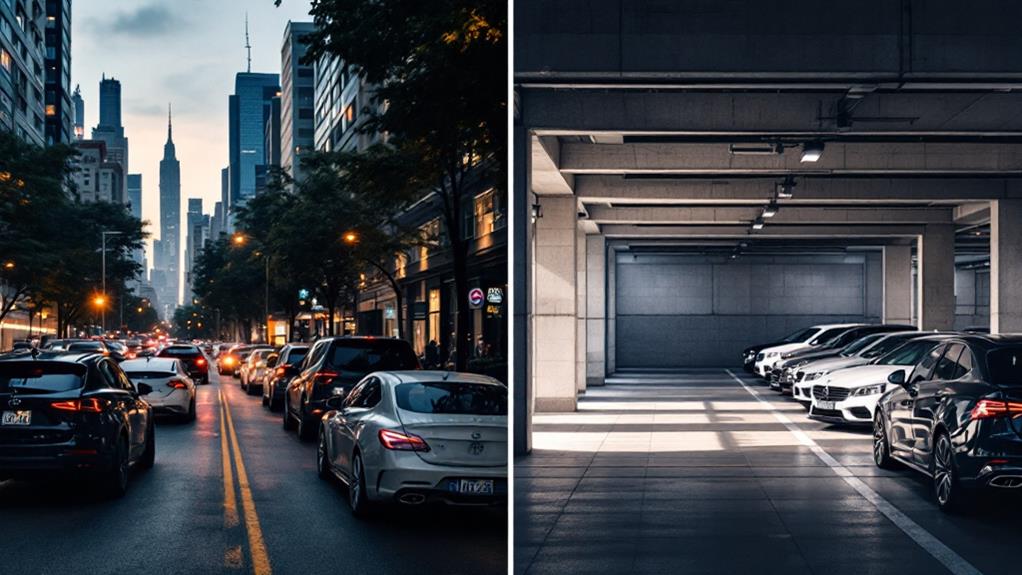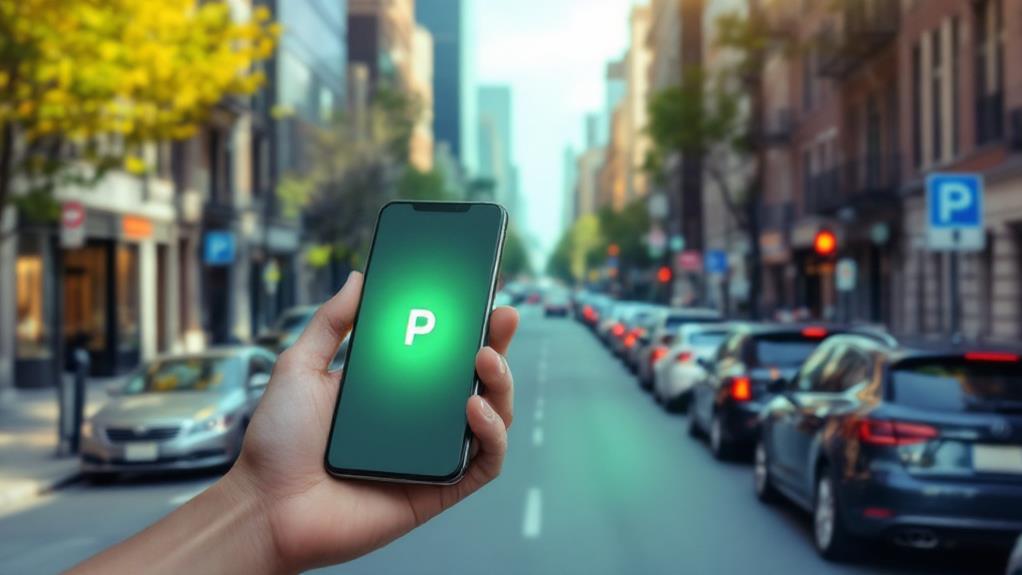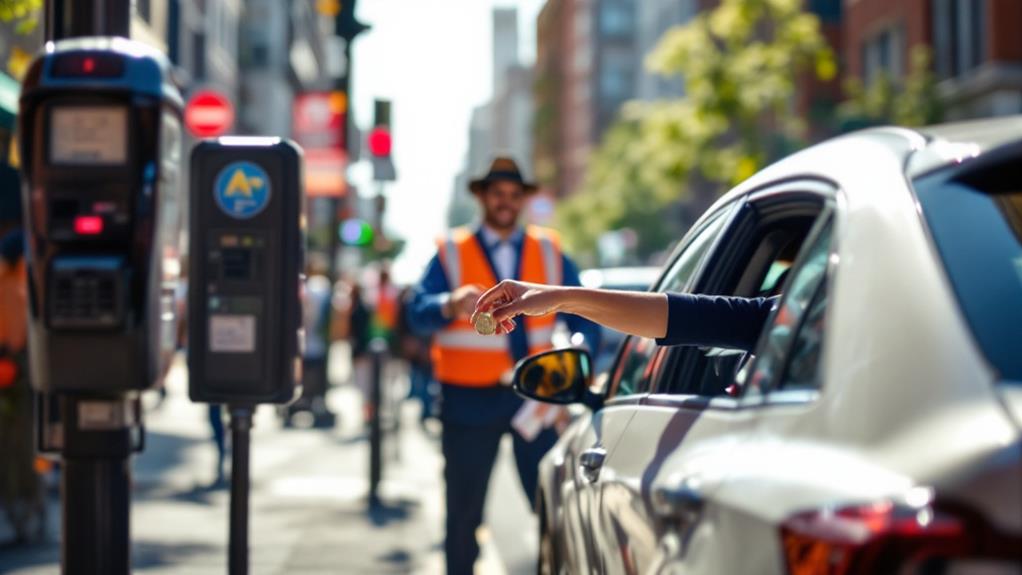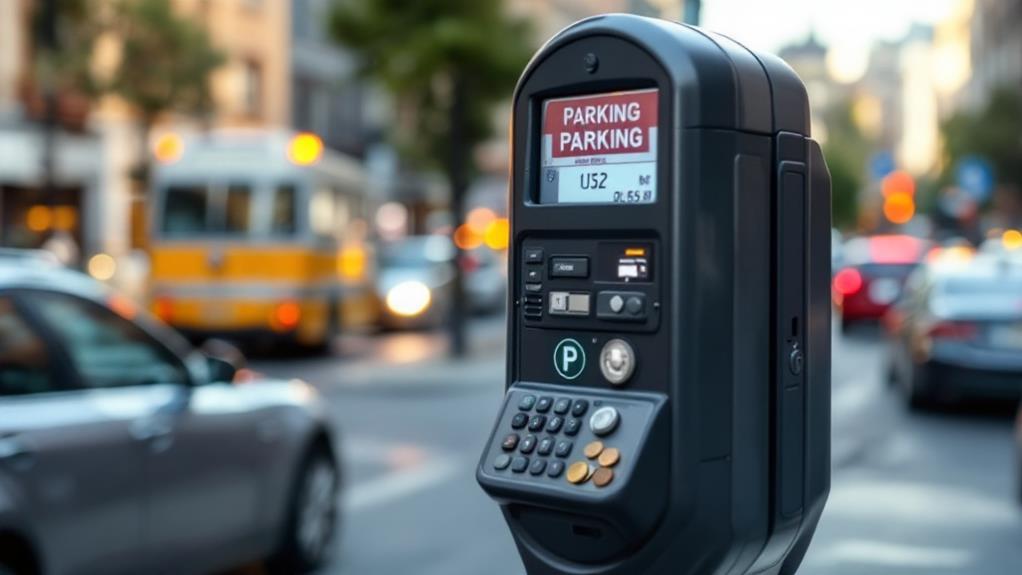Top Parking Safety Tips for Big City Drivers
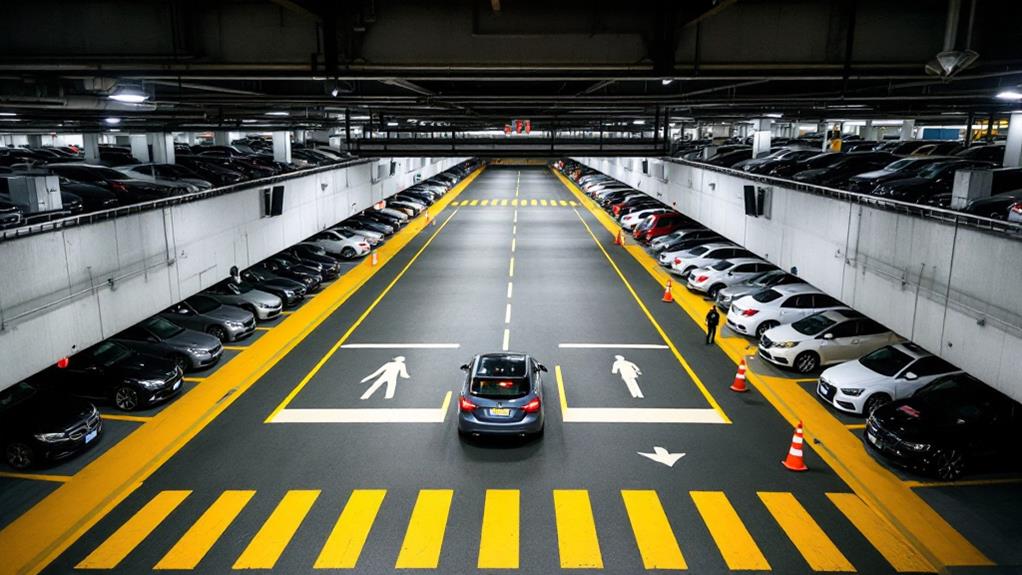
When parking in big cities, prioritize safety by choosing spots strategically. Opt for well-lit areas away from high-traffic zones and use apps like SpotHero to find convenient options. Become an expert in parallel parking techniques and understand curb color codes to avoid tickets. Always be prepared with coins for meters and scout parking areas beforehand. Communicate with restaurants or customers for convenient handoffs, reducing the need for complex maneuvers. Remember to secure your vehicle and stay alert when returning. By combining these tips with patience and adaptability, you'll handle urban parking challenges like a seasoned professional. Stick around to uncover more insider tricks for stress-free city parking.
Choose Spots Strategically
Five key strategies can help you choose safer parking spots in busy city environments. First, opt for parking spots farther from building entrances. This reduces your exposure to high-traffic areas and minimizes accident risks. Second, seek out larger parking spaces when possible. They provide more room to maneuver and reduce the chance of door dings or scratches to your vehicle.
Third, always try to park facing forward. This improves visibility and makes it safer to exit the parking spot when you're ready to leave. Fourth, resist the urge to pull through parking spots. While it might seem convenient, this practice can increase the likelihood of collisions with other vehicles.
Lastly, pay attention to the parking lot layout and flow. Consider how traffic moves through the area and choose a spot that aligns with the natural flow. As you traverse the parking lot, check your mirrors frequently and stay alert for pedestrians and other vehicles. By implementing these safe parking strategies, you'll considerably reduce your risk of accidents and damage to your vehicle in busy city parking environments.
Master Parallel Parking Techniques
Commanding parallel parking is often a formidable challenge for city drivers. To become proficient in this essential skill, you'll need to focus on precise vehicle positioning and employ your mirrors and backup camera effectively. The "pull up, back up" technique can be your secret weapon in conquering tight parking spaces. Align your rear bumper with the car in front of the spot, turn your steering wheel fully, and reverse slowly.
To improve your parallel parking prowess:
- Practice in low-traffic areas to build confidence
- Maintain a slow speed and use turn signals
- Check for pedestrians and other vehicles
- Ask a passenger to act as a spotter when needed
Utilize Parking Apps Effectively
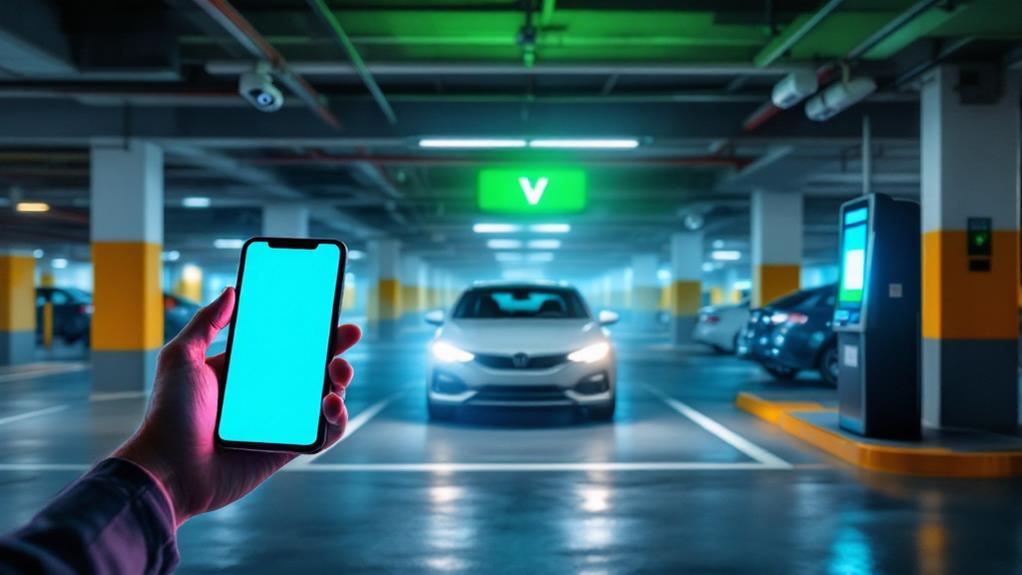
While becoming proficient at parallel parking is key, technology can greatly simplify your urban parking experience. Parking apps have revolutionized the way drivers navigate crowded city streets and find suitable spots. By downloading apps like SpotHero or ParkMobile, you'll gain access to affordable and convenient parking options near your destination.
When driving in unfamiliar areas, use Waze's "Where to Park" feature to quickly identify available parking lots and their prices. This can save you precious time and reduce stress while searching for a spot. For frequent city drivers, consider subscription-based apps like Way+ that offer flexible daily and monthly parking passes, potentially saving you money in the long run.
These apps provide real-time availability and pricing data, allowing you to compare multiple options and make informed decisions. To maximize their effectiveness, combine app usage with scouting the area beforehand. This strategy will help you optimize your parking plan and avoid costly tickets. By leveraging these technological tools, you'll streamline your parking lot driving experience, reduce time spent circling blocks, and enhance your overall safety in big city environments.
Understand Curb Color Codes
Across major cities, curb colors serve as a visual code for parking regulations. Understanding these curb color codes is a pivotal parking tip for safe [navigation] in urban areas. As you learned in drivers ed, paying attention to these markings can help you avoid tickets and [ensure] you're following local laws.
Red: No parking or standing
Yellow: Loading zones
Green: Time-limited parking
White: Passenger loading and unloading
Blue: Reserved for vehicles with disabled placards or plates
Remember, curb color meanings can vary by jurisdiction, so it's [essential to] familiarize yourself with local parking regulations. This knowledge is just as important in parking lots as it is on city streets.
Ignoring curb color codes can result in hefty fines, making it [crucial] to understand their meaning before parking. By staying alert and recognizing these visual cues, you'll be better equipped to make safe and legal parking decisions. Whether you're a seasoned city driver or new to urban parking, [mastering] curb color codes is an [invaluable] skill that can save you time, money, and stress in the long run.
Be Prepared With Coins
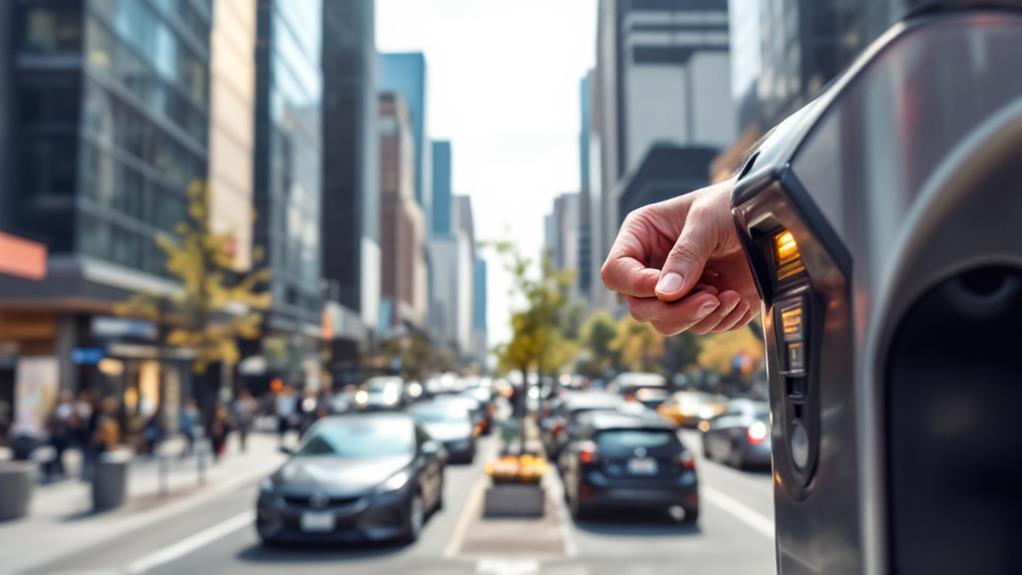
Although digital payment options are increasingly common, carrying a stash of coins remains essential for urban parking. When it comes to parking lot safety tips, being prepared with quarters is one of the most essential tips to stay safe and avoid costly violations. You'll often encounter parking meters that require exact change, making coins priceless for short-term parking needs.
Keep a supply of quarters in your vehicle, especially when you need to leave your vehicle for quick errands or deliveries in the city. This simple practice can save you money and hassle, as it's typically more cost-effective than relying on mobile payment apps with additional fees. When you need to parallel park on a metered street, having coins readily available allows you to quickly pay and focus on safely maneuvering your vehicle.
Scout Parking Areas Beforehand
Preparation is key when it comes to parking in a big city. Scouting parking areas beforehand can save you time, reduce stress, and enhance your safety when maneuvering parking in lively urban environments. Before heading to your destination, research potential parking options online or through parking apps. This proactive approach helps you avoid the frustration of circling busy parking lots or streets.
When scouting parking areas, keep these tips in mind:
- Look for well-lit areas with clear sightlines
- Choose spots near security cameras or parking attendants
- Avoid isolated or poorly maintained parking facilities
- Consider proximity to your destination and walking routes
Communicate for Convenient Handoffs

When it comes to parking in busy urban areas, effective communication can be your best ally. As a driver, you need to navigate more than just stop signs and speed limits; you must also coordinate with others to guarantee smooth deliveries and pickups. Whether you're behind the wheel for work or personal errands, reaching out in advance can save you time and stress.
Contact restaurants or customers before arrival to arrange a convenient hand-off location. Politely request that they meet you at your vehicle for a quick exchange, reducing the need to find parking in congested areas. This approach is especially helpful for new drivers, including those with a recent Drivers License or engaged in Teen Driving programs, as it minimizes complex parking maneuvers.
Always aim for courteous interactions when making these requests. Investigate various options to find the most suitable delivery point for all parties involved. By calling ahead, you can prepare for the delivery and avoid wasting time searching for parking spots. Remember to park in the correct direction and be mindful of local regulations. Effective communication not only enhances parking safety but also improves overall driving efficiency in active city environments.
Prioritize Safety Over Speed
Despite the rush of city life, it's crucial to remember that safety should always come before speed when parking. As a pivotal part of becoming a confident city driver, prioritizing safety can help keep both you and others secure on busy city streets. Advanced driver training often emphasizes the importance of taking your time when maneuvering into a parking spot, even if others are waiting.
To guarantee you're prioritizing safety over speed, consider these key points:
- Always check your surroundings before moving your vehicle
- Use your turn signals to indicate your intentions
- Be prepared to stop suddenly if pedestrians or other vehicles appear
- Take the time to adjust your mirrors and seat properly before departing
